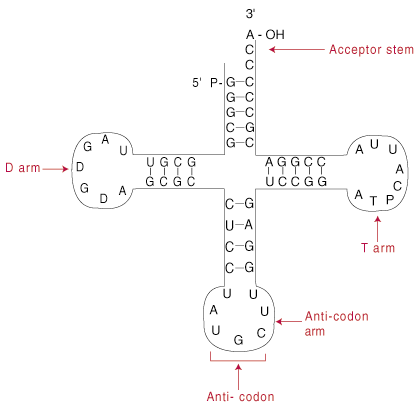Please wait while we process your payment
If you don't see it, please check your spam folder. Sometimes it can end up there.
If you don't see it, please check your spam folder. Sometimes it can end up there.
Please wait while we process your payment

By signing up you agree to our terms and privacy policy.
Don’t have an account? Subscribe now
Create Your Account
Sign up for your FREE 7-day trial
By signing up you agree to our terms and privacy policy.
Already have an account? Log in
Your Email
Choose Your Plan
Individual
Group Discount
Save over 50% with a SparkNotes PLUS Annual Plan!
 payment page
payment page
Purchasing SparkNotes PLUS for a group?
Get Annual Plans at a discount when you buy 2 or more!
Price
$24.99 $18.74 /subscription + tax
Subtotal $37.48 + tax
Save 25% on 2-49 accounts
Save 30% on 50-99 accounts
Want 100 or more? Contact us for a customized plan.
 payment page
payment page
Your Plan
Payment Details
Payment Summary
SparkNotes Plus
You'll be billed after your free trial ends.
7-Day Free Trial
Not Applicable
Renews July 8, 2025 July 1, 2025
Discounts (applied to next billing)
DUE NOW
US $0.00
SNPLUSROCKS20 | 20% Discount
This is not a valid promo code.
Discount Code (one code per order)
SparkNotes PLUS Annual Plan - Group Discount
Qty: 00
SparkNotes Plus subscription is $4.99/month or $24.99/year as selected above. The free trial period is the first 7 days of your subscription. TO CANCEL YOUR SUBSCRIPTION AND AVOID BEING CHARGED, YOU MUST CANCEL BEFORE THE END OF THE FREE TRIAL PERIOD. You may cancel your subscription on your Subscription and Billing page or contact Customer Support at custserv@bn.com. Your subscription will continue automatically once the free trial period is over. Free trial is available to new customers only.
Choose Your Plan
This site is protected by reCAPTCHA and the Google Privacy Policy and Terms of Service apply.
For the next 7 days, you'll have access to awesome PLUS stuff like AP English test prep, No Fear Shakespeare translations and audio, a note-taking tool, personalized dashboard, & much more!
You’ve successfully purchased a group discount. Your group members can use the joining link below to redeem their group membership. You'll also receive an email with the link.
Members will be prompted to log in or create an account to redeem their group membership.
Thanks for creating a SparkNotes account! Continue to start your free trial.
We're sorry, we could not create your account. SparkNotes PLUS is not available in your country. See what countries we’re in.
There was an error creating your account. Please check your payment details and try again.
Please wait while we process your payment

Your PLUS subscription has expired
Please wait while we process your payment
Please wait while we process your payment

Transfer RNA
In The Genetic Code, we explained how each codon in messenger RNA (mRNA) codes for a specific amino acid, and that in the process of translation the mRNA brings the amino acids together to form proteins. That explanation is correct, but it is also simplified, and overlooks a crucial component of the translation process. That component is transfer RNA (tRNA), which acts as a kind of link between the information encoded in the mRNA and the amino acids. If the mRNA is a code, then the tRNA is the key that interprets that code into physical proteins.
This section will describe the structure of tRNA and describe how tRNA can "carry" amino acids; knowledge of these aspects of tRNA will be vital for understanding the actual process of proteins synthesis covered next section.
Transfer RNA molecules vary in length between 60 and 95 nucleotides, with the
majority measuring about 75 nucleotides (much smaller than the normal mRNA
strand). Regions of self-complementarity within tRNA creates a cloverleaf-
shaped structure.

The cloverleaf structure shown above is actually a two dimensional simplification of the actual tRNA structure. The cloverleaf is therefore called a secondary structure. In reality, the cloverleaf folds further into a tertiary structure, a sort of vague L-shape. At one end of the L lies the anticodon; at the other is the acceptor stem. The L-shaped structure simply amplifies the two active ends of tRNA: the anticodon and the acceptor stem.
The structure of the anticodon of tRNA helps to explain the degeneracy of the genetic code. Previously, in the SparkNote on the Genetic Code, we saw that more than one codon could specify a particular amino acid. However, now we know that tRNA acts as a go between for the codons of mRNA and amino acids. Each tRNA binds to a specific amino acid, but the anticodons of some tRNA molecules can bind to two or three different codons.
The flexibility of some anticodons is the result of the fact that the 3' end of the anticodon is more spatially confined than the 5' end. As a result, the 5' end of the anticodon is free to hydrogen bond with several base groups located at the 3' position of the codon. This idea is called the wobble hypothesis and has been confirmed by X-ray studies that show that while the 3' and middle positions are held tightly in a specific orientation by stacking interactions, the 5' position is not. The 5' position is called the wobble position because it can move around to allow for its pairing with different bases.
Please wait while we process your payment

